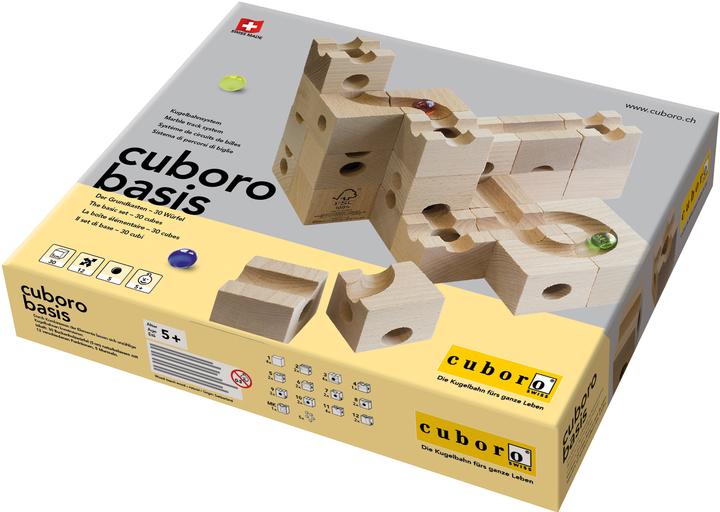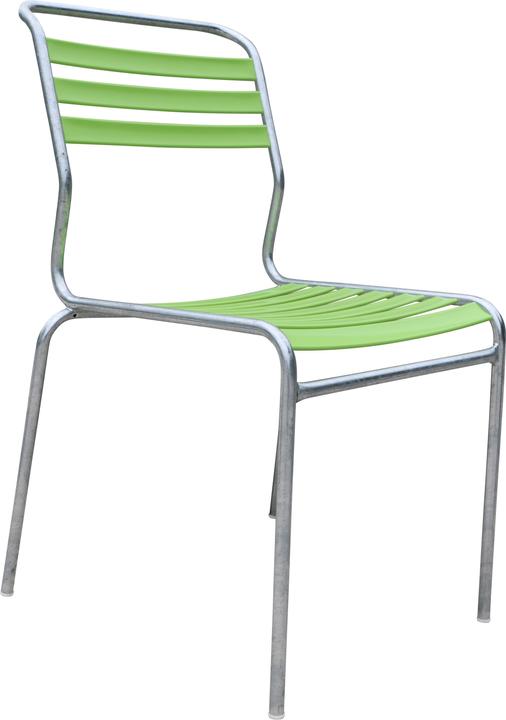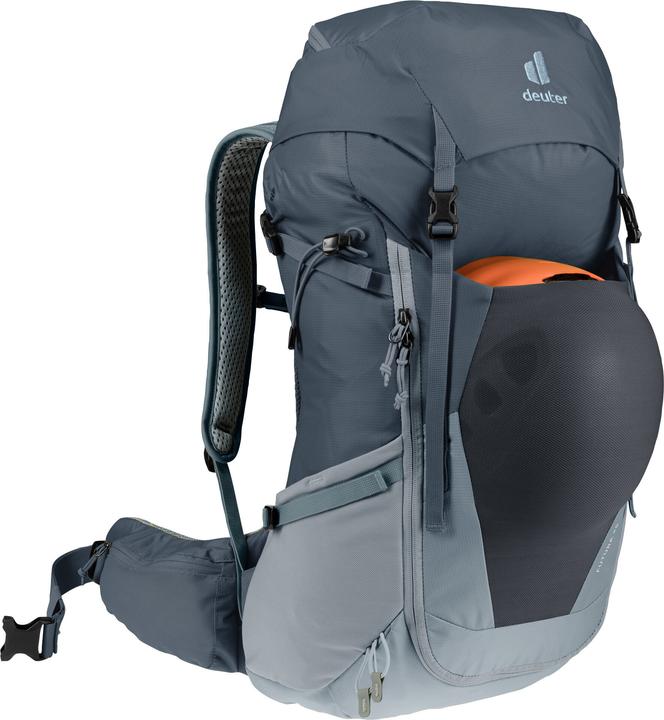

Here to stay: a selection of timeless products from our range
In the near future, you’ll receive a brochure with each Galaxus package. It contains a collection of personal «timeless product» favourites – as chosen by our editors and marketing employees. In case you don’t have a copy of the brochure, here’s what they picked.
Like my uncle used to say, «Buy cheap, buy twice.» It’s how he taught me that a good product usually costs a bit more. What’s a «good» product, though? I’d say it’s something you can enjoy for a long time, and maybe even pass on to the next generation. Here, we’ve put together a selection of products just like that. In each short text, we subjectively explain what makes the selected product durable – and so, sustainable. After all, things that last long don’t get disposed of as quickly. I’ve since gained proper understanding of my uncle’s saying. Have fun reading!
Loads of manual labour for a hiking shoe
Meindl has been producing high-quality shoes for nine generations since 1683. The family business still manufactures its products in Germany. More than 200 employees work at the factory located in the municipality of Kirchanschöring in Bavaria, continuing a centuries-old tradition of true craftsmanship. Of course, modern equipment boosts any manual labour today. But at Meindl, there’s still a person stationed at every machine, responsible for carrying out one of the over 200 steps it takes to produce a high-quality hiking boot.
A durable hiking boot is the most important piece of equipment when you’re out and about. It’s this combination of high-quality materials and craftsmanship makes the Meindl Litepeak Pro GTX a reliable companion on any hike. Patrick Bardelli

The kneading and mixing ninja
The invention of the mixer gave rise to what’s now considered a classic: the KitchenAid. KitchenAid’s patent is over 100 years old and has hardly changed since. The competition is hunting for customers by adding digital displays, sensors and app controls. But the Ohio-based company is staying true to its original patent. Their recipe for success? A dough hook for mixing and kneading and ten speed levels for the whisk and paddle. Should anything break, it’s easily repaired. After all, a KitchenAid is for life. It’s made of sturdy metal instead of cheap plastic, which is also why it’s so pricey. But as amazing as the base functions of the KitchenAid are, some of the additional parts are totally useless. There’s too much plastic in them. And so, the veteran of kitchen machines remains a jack of no trades and master of just one – mixing and kneading. I mean this in the best sense of the expression. Simon Balissat
A classic from the New Stone Age
Be it for hanging pictures or assembling Ikea furniture, we’ve all used this tool before. I'm talking about the hammer. Since the advent of stone axes in the New Stone Age, this tool with a head and handle has stayed a true staple. Its predecessor, the hand axe, is already almost two million years old – now that’s timeless design!
If you buy a high-quality hammer, you’re unlikely to have to replace it in your lifetime. Just look out for a solidly connected head and handle, a smoothly polished head, and DIN certification. Your hammer will then accompany you through every move, survive any and all of the cheap furniture you throw at it and make sure every nail is firmly stuck in the wall... just like MC Hammer’s «U Can’t Touch This» is now sure to be stuck in your head (you’re welcome). Carolin Teufelberger
Committed to accountability
It’s difficult to think of a company more Swiss than Victorinox. The classic Swiss Army Knife is a hit among exported goods; the Swiss Confederation’s business card of sorts. The company from Ibach in the canton of Schwyz is a rare example of sustainable business: «Waste not, want not!» says CEO Carl Elsener. Twenty years ago, when sales plummeted by 30% after 9/11, Victorinox had enough reserves to turn things around without having to lay off any employees. While most companies’ commitment is first and foremost to their shareholders (think «shareholder value»), Victorinox puts its customers and employees first. This is thanks to the fact that the company is largely family-owned – Carl Elsener is the fourth generation to run it. He’s the kind of guy who doesn’t fit the image of the cold CEO at all. Elsener sees himself partly as a CEO and partly as a kind of protective patriarch. «I worked with my father for more than 30 years. He was a true protective patriarch and pioneer. Victorinox was his life, and the little red pocket knife his passion. He was always a great role model to me and my siblings. Continuing to develop Victorinox is a mission my family and I don’t take lightly. We strive to conserve the same spirit the Victorinox pioneers put in when they built up Victorinox.» Simon Balissat
The wooden cube for budding geniuses
Sōta Fujii from Japan is a genius. He plays Japanese chess – shogi – so well that four years ago, the then 14-year-old became the youngest professional shogi player in history. «Why is he so good?» his mother was asked on TV, to which she proudly pulled out three boxes of Cuboro modular marble tracks. The company from Gondiswil, Bern, hasn’t been able to keep up with demand since. Japan has discovered the educationally valuable, sustainably produced wooden cubes that every child in Switzerland knows. There’s a good reason Cuboro’s slogan is «the marble track for a lifetime». Only untreated FSC beech wood from Swiss forests is used in production. After the logs have been allowed to dry in the open air for a year, they’re sent to the carpenters at «Nyfeler Holzwaren» for processing. The dry logs are then turned into the very special Cuboro cubes. This is where the magic happens. Only carpenters with many years of experience are capable of manufacturing the Cuboro tracks. Even just creating the curves on the cubes is a highly complex operation. Finally, every dimension is carefully checked. Only perfectly crafted elements find their way into the rooms of curious children. And so, marbles are guaranteed to roll smoothly through the tracks even years after purchase. Ramon Schneider
An (almost) eternal shelf life
In 2004, archaeologists found 5000-year-old honey during excavations in Georgia. I wouldn’t spread it on my toast any more, but hey – it did, technically speaking, stand the test of time. In fact, honey is one of the least perishable foods. Stored properly, it’s nigh impossible to make the sweet goop go bad. With time, honey does lose a certain amount of its bioactive substances and pharmaceutical effects, but it’s still safe to eat. Its long shelf life is mainly due to the high sugar content of around 80 per cent. The acids and enzymes it contains also prevent the growth of fungi and bacteria.
But proper storage is key. Honey fares best in a dry (<55 per cent humidity) and cool (15 degrees Celsius), dark place. If you follow these simple rules, your honey will keep for years. Even well beyond the stated best-before date. After all, it does mean «best before» and not «lethal from» said date. Ramon Schneider
Light through storm and wind
You’ll most likely bequeath the Feuerhand storm lantern to your grandchildren. After all, it was already around in our great-grandparents’ time. The lantern has been exiting the assembly line in unchanged form since 1933. To this day, it’s manufactured in Germany, despite a chequered history of bankruptcies and changes of ownership. Thanks to the powder coating and galvanised steel, rust stands almost no chance. What turns a simple lantern into a storm lantern is borosilicate glass. It’s heat resistant and makes sure the flame stays steady, even in strong winds and weather. Only soot might cloud the glass. That’s why it’s important to use high-purity petroleum or kerosene oil. Fully filled, it gives you up to 20 hours of light. Fiat Lux – let there be light! Ramon Schneider
Surviving all progress unchanged
No other beauty product gives me that nostalgic feeling of cringe quite like the Dream Matte Mousse Foundation by Maybelline. It’s the 2000s. Every teen on the globe is the proud owner of the little glass pot after a misleading ad featuring Adriana Lima. Our faces collectively glow orange. Our skin is dry and crusty. Flawless skin? Ha, ha. Today, years later, numerous memes about the product continue to spread online. After all, this mousse counts as the beauty faux pas of my generation.
I, too, would like to look back on past times with a smile. But the Dream Matte Mousse foundation is still being sold to this day. With all its deficits from the past. How’s the shade range? Well, there are six shades of orange to choose from. At least in Switzerland. Very inclusive indeed. And the texture? As unsuitable for even application as ever. Dark contours and streaky patches are inevitably part of the look. The Dream Matte Mousse is a fossil from a bygone era that has miraculously survived any and all advancement in the beauty industry. How, exactly? It’s a never-ending mystery to me. Natalie Hemengül
The Fountain of Youth for shoes
If shoes are more than just fast fashion to you, you’re probably wondering how to make your favourite pairs last as long as possible. My answer to this question is simple: leather balm. Or, put more crassly: shoe fat. Even if you don’t want to invest a lot of time in your footwear, you should at least treat the leather to a little grease every now and then. It keeps the outer material supple while still allowing it to «breathe», and it makes sure water droplets roll right off. Of course, step one in shoe care is carefully removing coarse dirt with a brush or damp cloth. After that, the handy can comes into play. You can apply the balm using the included sponge or a cloth. I’ve actually got into the habit of applying the balm with my hands and massaging it in – now that’s proper manual labour! And it has a nice side effect: not only do my shoes come out looking brand new, it also leaves my hands soft and supple. Barbara Schuler
Weatherproof
When it comes to choosing a chair for my garden or balcony, I refuse to compromise. I want to enjoy sitting on it as much as I enjoy sitting on my dining chairs. That’s why, years ago, my decision fell on the «Säntis». It’s a chair that not only bears the name of a striking mountain in the Alpstein, but it’s also made in Switzerland. Schaffner AG, based in Müllheim, Thurgau, has had the classic «Lättlistuhl» in its product range for many years. The «Säntis» is stackable and can be neatly stored in the cellar over winter. It comes in a plethora of colours, with or without armrests and with bars or a netted seat. The frame is made of hot-galvanised steel, so it’s both weatherproof and durable. And if you do feel like having a fresh set of slats after a few years or you need to replace the feet, you can get spare parts from the manufacturer that you can install yourself. Barbara Schuler
Evergreen
The Monstera deliciosa requires a lot of attention. It wants to be seen. And not just since becoming an Instagram star. When it comes to care, this plant is quite laid back. But it does want to grow bigger and bigger, preferably being relocated to a larger pot every year. And the smaller it is, the more determined it is to grow. This presents its own challenge: where to put this jungle of a houseplant? But this is what makes the Monstera deliciosa more than just some trendy decor. This plant is not only hard to keep small, but also more exciting than a dull decorative object. Whenever my Monstera needs more space, I end up rearranging my room completely. And it always feels rewarding. Right now, it’s sat at the window, protecting me from the prying eyes of strangers. This green foliage is the perfect alternative to a curtain.
Since I’ve had them, their heart-shaped leaves also make me less fearful of change in my life. Initially fully enclosed, their leaves open over time. This creates the cracks that give the Monstera its beautiful appearance. They’re a constant reminder that broken hearts are not a bad thing. Pia Seidel
Superfood done grandma-style
Preserving fresh vegetables from the market while supplying your stomach and intestines with healthy bacteria? What sounds like urban fitness blah is actually ancient tradition. Fermented vegetables are more of a superfood than quinoa, goji and chia combined. Our grandparents were already aware of the benefits of fermentation; after all, sauerkraut is nothing other than fermented cabbage. Here’s how to do it: chop the vegetables, add spices such as pepper or bay leaf to taste. Throw everything in a jar and let it ferment at room temperature in a 2% salt solution until the desired acidity is achieved. The classics are sauerkraut and pickles, but those who like to experiment can try Korean kimchi or tepache, which is fermented pineapple juice. The fermented veggies are not only delicious and healthy, but they look really pretty in the glass container and the whole family can help make them. Simon Balissat
The unbreakable backpack
I can’t remember when I bought the Deuter backpack that’s currently lying on a shelf in the basement, waiting to be used again. Even the omniscient Google can’t remember the model. With 25 litres of packing volume, the «AC Zoom 25» was my entry model of choice in hiking backpacks. It’s really high time to get a new, somewhat larger one with more features. But I inevitably find myself thinking that the old one’s still in perfect working order. The side pockets, back ventilation, straps and closures all work flawlessly. And this despite the fact that I’ve used it to transport stones from the mountains back down to the valley – a heavy load of glittering but sharp rocks. Not to mention the many hours of blazing mountain sun shining on it, and the many drops of sweat flowing into the fabric. The backpack experts at Deuter do a really good job. Almost too good. Because it might be a long time before my little red backpack is so tattered that I buy a new one. Martin Jungfer
Journalist since 1997. Stopovers in Franconia (or the Franken region), Lake Constance, Obwalden, Nidwalden and Zurich. Father since 2014. Expert in editorial organisation and motivation. Focus on sustainability, home office tools, beautiful things for the home, creative toys and sports equipment.















